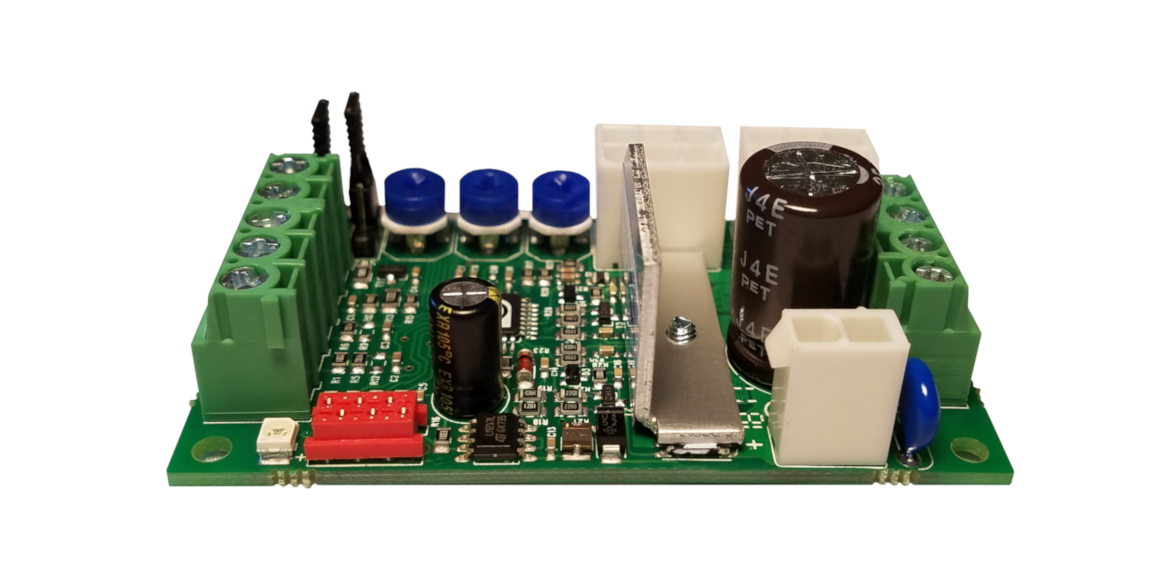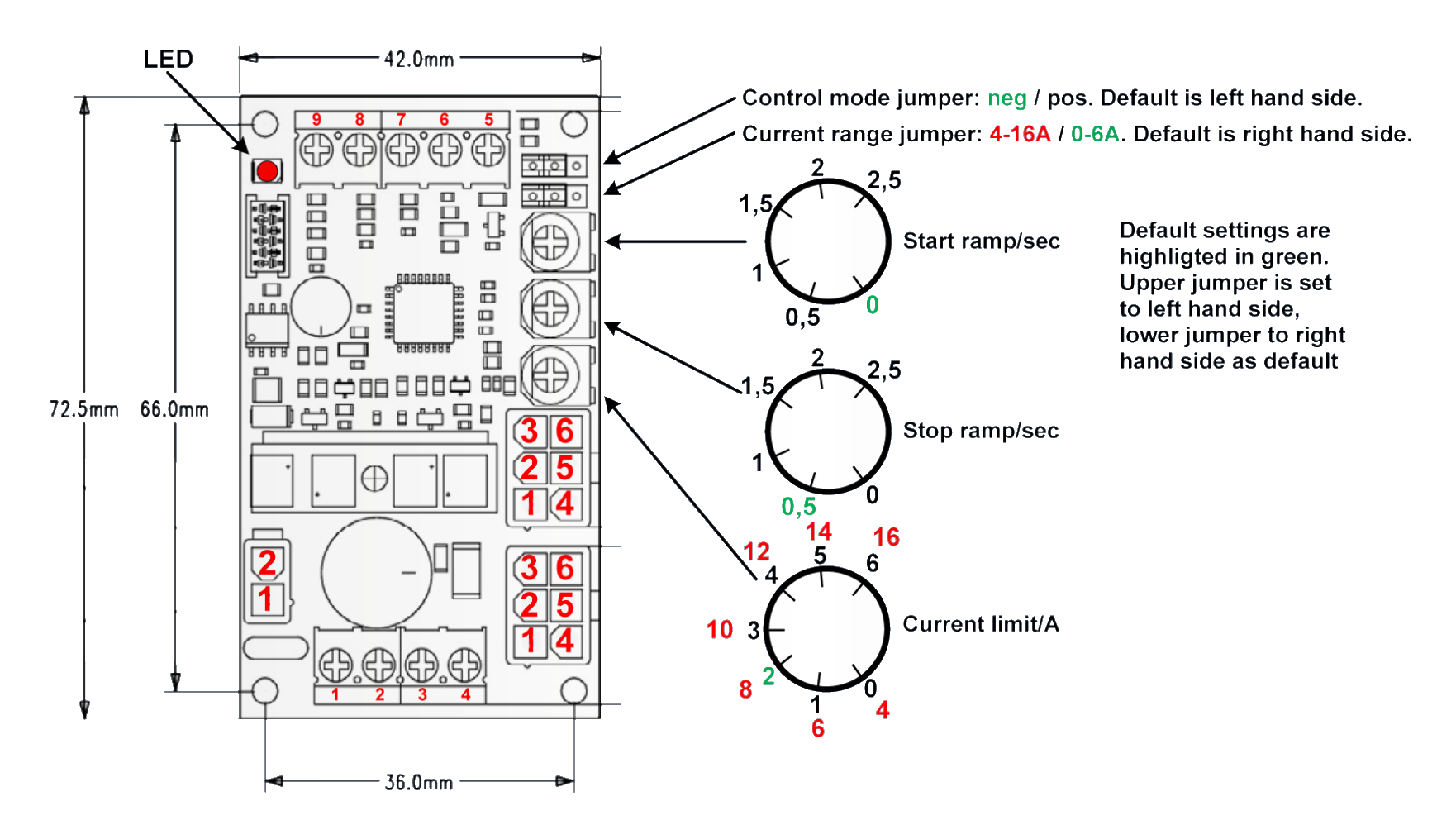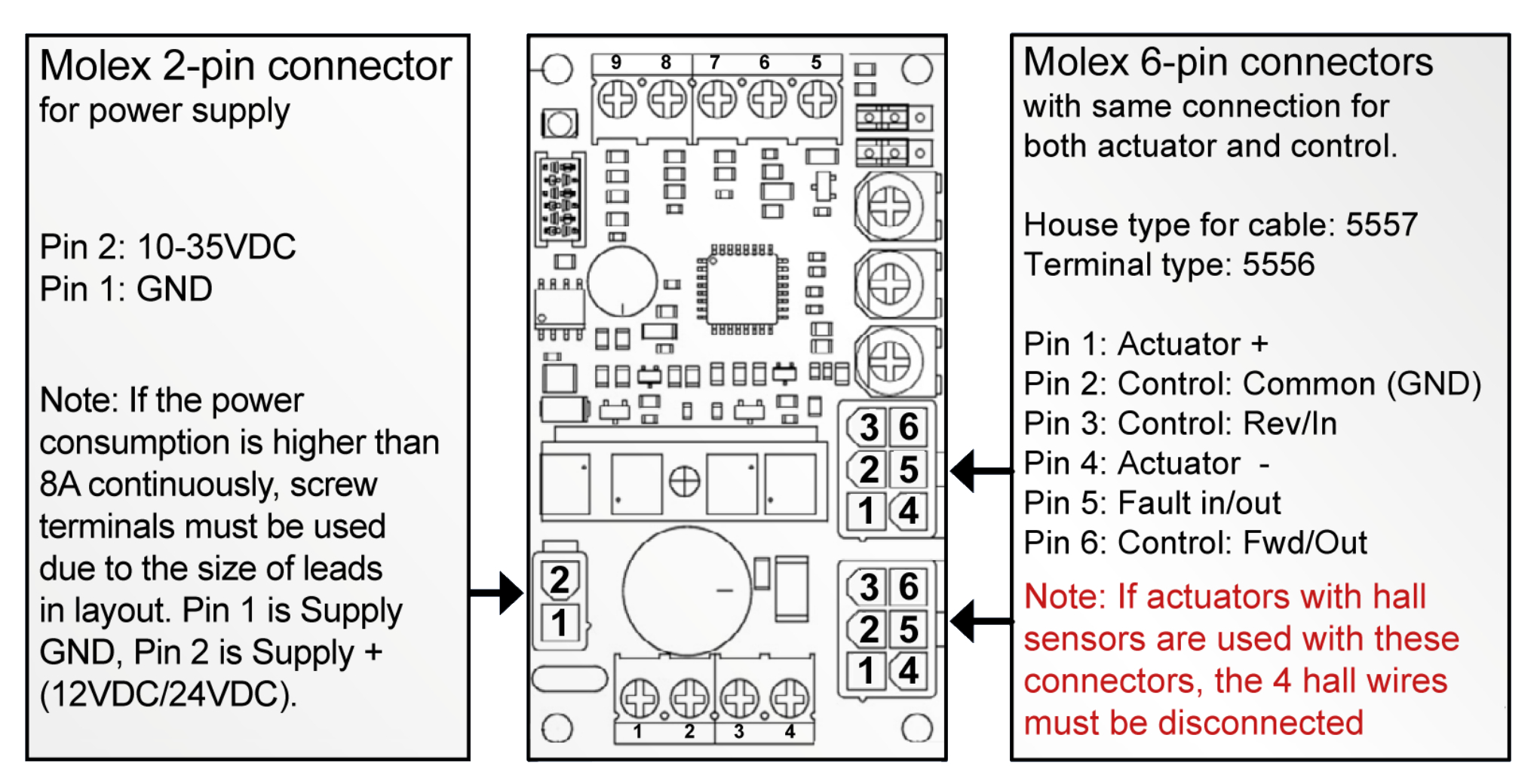

The EEL-S2-1 is developed for controlled ON-OFF driving and direction change of the easyE-line actuators. EEL-S2-1 has advanced current limit features. It limits the actuator current in start-up, braking and jam-situations and in that way protects the motor and the mechanics. EEL-S2-1 also has a fault in- and output which indicates error/over-current status and can be used to stop the actuator (for example if an emergency-stop switch is used). The start and stop ramp times are individually adjustable to suit each application. In other words the motor voltage is controlled to give a preferred smooth start and stop. When the EEL-S2-1 controller is without power, the motor is dynamically braked with so called short-circuit braking, i.e. the motor poles are connected together. The reverse and forward inputs can be set to work with negative or positive voltage by moving a jumper. EEL-S2-1 has a ‘trip’ feature that cuts the motor voltage if the current limit value is exceeded (after trip delay of 2ms). After trip the motor can only be started in the opposite direction. Additionally the EEL-S2-1 provides ‘kick-start’ which means 100ms at full speed (100%PWM). Current limit during kickstart is up to 35A. If the actuator is stopped without going into trip mode, then the EEL-S2-1 controller will allow 50% higher current from start and until 500ms after ending start ramp.
| Model | Current | Idle current | Voltage | |
| EEL-S2-1 | 10A | 15mA | 12V or 24V DC | BUY |
|---|

